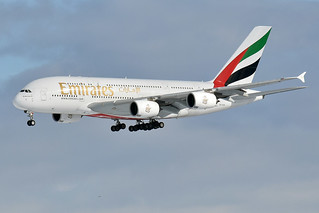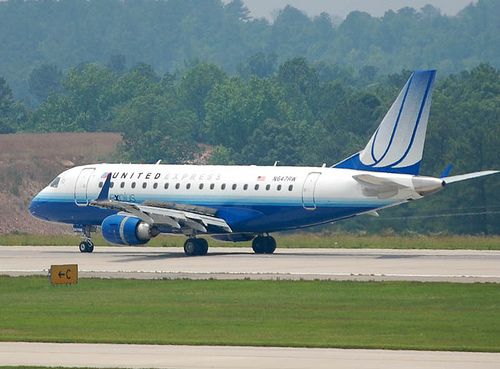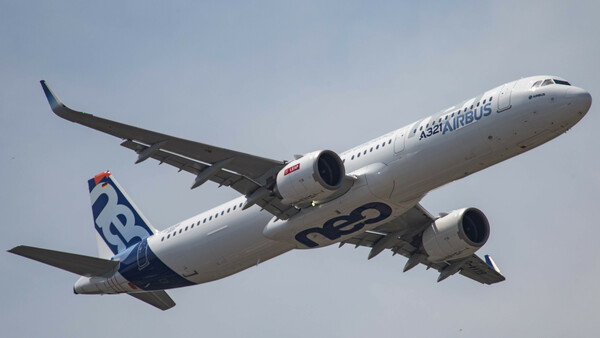Emirates A388 at Singapore on Mar 2nd 2023, runway excursion on landing
Last Update: December 13, 2023 / 17:24:24 GMT/Zulu time
Incident Facts
Date of incident
Mar 2, 2023
Classification
Incident
Airline
Emirates Airlines
Flight number
EK-354
Departure
Dubai, United Arab Emirates
Destination
Singapore, Singapore
Aircraft Registration
A6-EVJ
Aircraft Type
Airbus A380-800
ICAO Type Designator
A388
Airport ICAO Code
WSSS
The aircraft remained on the ground in Singapore about 9 hours, then departed for the return flight.
Singapore's TSIB reported the aircraft sustained minor damage. The occurrence was rated a serious incident and is being investigated.
On Dec 13th 2023 the TSIB released their final report concluding the probable causes of the serious incident were:
- The PF said that when the aircraft was around 200ft AGL, the intensity of the rain suddenly increased. He was surprised by the change in rain intensity and his handling of the aircraft was somewhat affected. The investigation team is unable to assess how his aircraft handling ability was affected.
- After autopilot was disengaged during the approach, the aircraft drifted towards the right of the centreline. The PF did not manage to correct the rightward drift to bring the aircraft back to the runway centreline and did not consider conducting a go-around manoeuvre.
- The PF’s attempt to correct the aircraft’s drift by applying rudder inputs was not an appropriate method to correct lateral deviations.
- The PF misjudged the magnitude of the drift and thought that the offset from the extended runway centreline was still acceptable for a safe landing. The aircraft ended up touching down near the right runway edge line, still drifting towards the right edge of the runway, and its momentum caused it to momentarily veer off the right edge of the runway.
- The PM called out “go around” twice before the PF landed the aircraft. The PF only heard the first callout but did not fully understanding the message. Despite so, the PF did not ask the PM to repeat or clarify the message but instead chose to continue to land.
- There was a change in weather condition, i.e. rain, over the aerodrome after the flight crew had received an earlier ATIS that did not report rain over the aerodrome. The Runway Controller also did not inform the flight crew of rain over the aerodrome. However, the flight crew were aware of the rain situation as the aircraft was flying through weather during the final approach.
- The lack of most up-to-date weather information from ATC did not contribute to the occurrence as the flight crew had already been aware of the rain situation and could have visually assessed the situation and reacted appropriately. Nevertheless, it would be desirable for such rain information to be provided to pilots during the approach for better flight planning by the latter.
The TSIB analysed:
Handling of the aircraft
The autopilot was engaged during the approach and was maintaining the aircraft on the extended runway centreline. After the autopilot was disengaged by the PF when the aircraft was about 180ft AGL, the aircraft started to drift towards the right of the extended runway centreline. The left roll inputs applied by the PF was not sufficient to arrest the rightward drift of the aircraft.
As mentioned in paragraph 1.1.12, the PF had tried without success to prevent the aircraft from continuing to drift towards the right edge of the runway. According to the aircraft manufacturer’s operational and safety documentation, the right technique to correct minor lateral deviation during approach is to apply small amount of roll input. In this case, the flight crew should have applied more left roll input instead of left rudder input. Applying rudder input is not an appropriate method to correct lateral deviations.
The aircraft ended up touching down near the right runway edge line, still drifting towards the right edge of the runway, and its momentum caused it to momentarily veer off the right edge of the runway.
According to the operator’s standard operating procedure (SOP), if the pilots perceive, at any point during the approach, that the approach and landing cannot be completed as briefed, a go-around must be initiated. According to the aircraft manufacturer’s operational and safety documentation, a go-around may be executed so long as reversers have not been selected. In this event, although the PF did perceive that the aircraft had drifted right of the centreline, he misjudged the magnitude of the drift and thought that the offset from the runway centreline was still acceptable for a safe landing.
The drifting of the aircraft to the right during the final approach constituted an unstable approach. It would have been prudent for a go-around to be conducted in such a situation.
Rain intensity and information of rain over the aerodrome
The aircraft was flying through heavy rain during the final approach. According to the PF, at around 200ft AGL, the intensity of the rain suddenly increased and he was surprised by this and his handling of the aircraft was somewhat affected. To the extent that the PF did not provide details on his reaction to this sudden increase in rain intensity, the investigation team is unable to assess how the suddenness of the increase in rain intensity affected or could have affected the PF’s handling of the aircraft.
According to ATC’s SOP, ATC should inform pilots of the prevailing weather if it has changed significantly from the last observed or broadcasted over ATIS weather, but there was no procedure requiring runway controllers to check that pilots had taken note of or were aware of the most up-to-date ATIS. When the flight crew first contacted Changi Tower, the then current ATIS was broadcasting that there was rain over the aerodrome. From the Runway Controller’s point of view, there was no significant change in weather, so he did not inform the flight crew of the rain over the aerodrome. As can be seen from this occurrence, it is possible for pilots not to have been aware of the information on rain over an aerodrome. Hence, it is desirable that weather information over aerodromes be provided to pilots during landing.
The investigation team opined that the lack of the updated weather information over the aerodrome did not contribute to the occurrence as the flight crew had already been aware of the rain situation and could have visually assessed the situation and reacted appropriately, including the need to go-around. Nevertheless, the investigation team opined that it would be desirable for such rain information to be provided by runway controllers to pilots during the approach for better flight planning by the latter.
Decision to continue landing after “go-around” callouts
When the aircraft was about 30ft AGL and noting that the aircraft was still drifting, the PM called out “go-around”. The PF told the investigation team that he did not understand what the PM had said but did not ask the PM to repeat or clarify what the PM had said. Instead, he responded with “no it’s OK” just so that he could get on with focusing on landing the aircraft. It would have been more prudent for the PF to ask the PM to repeat or clarify his message.
The PM called out “go-around” again. By then, the aircraft was already touching down on the runway. According to the PF, he did not hear this second “go-around” callout and continued with the landing.
The operator’s SOP stated that whenever a “go-around’ callout is made by either pilot, it is mandatory that the pilots execute the go-around manoeuvre. The PM had called for a “go-around”. When he did not receive an appropriate response as per the operator’s SOP, he called for “go-around” again. However, by this time the aircraft had already landed. The PF’s decision to continue landing despite the “go-around” callouts by the PM was not in line with the SOP. Based on what the PF shared with the investigation team, he did not correctly perceive the first “go-around” callout and missed the second. As a result, the PF did not know that the PM had call for a go-around and thus, the PF did not execute the go-around manoeuvre as stated in the operator’s SOP.
The PF’s decision to continue landing without fully understanding what the PM said (i.e. the first “go-around callout) does not accord with good cockpit resource management (CRM) practices. The importance of effective communication cannot be over-emphasised. If unsure of what was said by the other pilot(s), a pilot should request the pilot(s) to repeat the message.
Metars:
WSSS 020800Z 33006KT 5000 TSRA FEW010 FEW016CB OVC140 23/23 Q1011 RERA BECMG FM0830 TL0845 NSW=
WSSS 020730Z 34009KT 2000 +TSRA SCT010 FEW016CB OVC120 23/23 Q1011 BECMG FM0800 TL0815 8000 NSW=
WSSS 020700Z 36013KT 1500 +RA FEW008 FEW016TCU FEW018CB OVC120 24/23 Q1012 BECMG FM0710 TL0720 4000 RA BECMG FM0750 TL0800 6000 NSW=
WSSS 020630Z 36013KT 330V030 2000 SHRA FEW010 SCT016TCU FEW018CB BKN140 24/23 Q1012 BECMG FM0715 TL0730 8000 NSW=
WSSS 020600Z 06008KT 030V090 9999 4500NE -SHRA FEW014 FEW016TCU FEW018CB SCT030 29/22 Q1011 TEMPO TL0700 4000 SHRA=
WSSS 020530Z VRB03KT 9999 FEW018TCU BKN150 29/23 Q1012 NOSIG=
WSSS 020500Z 03008KT 350V060 9999 FEW018TCU BKN150 28/24 Q1012 NOSIG=
WSSS 020430Z 32007KT 280V020 9999 FEW018TCU SCT020 BKN300 29/24 Q1013 NOSIG=
WSSS 020400Z 34005KT 290V060 9999 FEW018TCU SCT020 BKN300 29/24 Q1013 NOSIG=
WSSS 020330Z 32006KT 290V350 9999 FEW018TCU SCT020 BKN300 28/23 Q1014 NOSIG=
WSSS 020300Z 34006KT 280V050 9999 FEW018TCU SCT020 BKN300 28/23 Q1014 NOSIG=
Incident Facts
Date of incident
Mar 2, 2023
Classification
Incident
Airline
Emirates Airlines
Flight number
EK-354
Departure
Dubai, United Arab Emirates
Destination
Singapore, Singapore
Aircraft Registration
A6-EVJ
Aircraft Type
Airbus A380-800
ICAO Type Designator
A388
Airport ICAO Code
WSSS
This article is published under license from Avherald.com. © of text by Avherald.com.
Article source
You can read 2 more free articles without a subscription.
Subscribe now and continue reading without any limits!
Read unlimited articles and receive our daily update briefing. Gain better insights into what is happening in commercial aviation safety.
Send tip
Support AeroInside by sending a small tip amount.
Related articles
Emirates B772 over Saudi Arabia on Jan 4th 2026, loss of cabin pressure
An Emirates Boeing 777-200, registration A6-EWB performing flight EK-929 from Dubai (United Arab Emirates) to Cairo (Egypt), was enroute at FL360…
Emirates A388 at London on Dec 31st 2025, gear problem on departure
An Emirates Airbus A380-800, registration A6-EUF performing flight EK-2 from London Heathrow,EN (UK) to Dubai (United Arab Emirates), was climbing…
Emirates A388 at Auckland on Nov 30th 2025, tyre and wheel damage on landing
An Emirates Airbus A380-800, registration A6-EUE performing flight EK-448 (dep Nov 29th) from Dubai (United Arab Emirates) to Auckland (New Zealand),…
Emirates A388 at Nice on Aug 18th 2023, slat damage
An Emirates Airbus A380-800, registration A6-EOM performing flight EK-77 from Dubai (United Arab Emirates) to Nice (France), concluded a seemingly…
Emirates A388 near New York on Jun 28th 2025, engine shut down in flight
An Emirates Airbus A380-800, registration A6-EUW performing flight EK-203 from Dubai (United Arab Emirates) to New York JFK,NY (USA) with 450 people…
Newest articles
Republic E170 at Savannah on Jan 8th 2026, smoke on flight deck
A Republic Airways Embraer ERJ-170 on behalf of United, registration N647RW performing flight UA-3496 from Chicago O'Hare,IL to Savannah,GA (USA)…
Indigo A21N at Gorakhpur on Jan 11th 2026, bird strike
An Indigo Airbus A321-200N, registration VT-IMR performing flight 6E-437 from Gorakhpur to Bangalore (India) with 216 people on board, was climbing…
Subscribe today
Are you researching aviation incidents? Get access to AeroInside Insights, unlimited read access and receive the daily newsletter.
Pick your plan and subscribePartner

ELITE Simulation Solutions is a leading global provider of Flight Simulation Training Devices, IFR training software as well as flight controls and related services. Find out more.
SafetyScan Pro provides streamlined access to thousands of aviation accident reports. Tailored for your safety management efforts. Book your demo today
AeroInside Blog
Popular aircraft
Airbus A320Boeing 737-800
Boeing 737-800 MAX
Popular airlines
American AirlinesUnited
Delta
Air Canada
Lufthansa
British Airways








